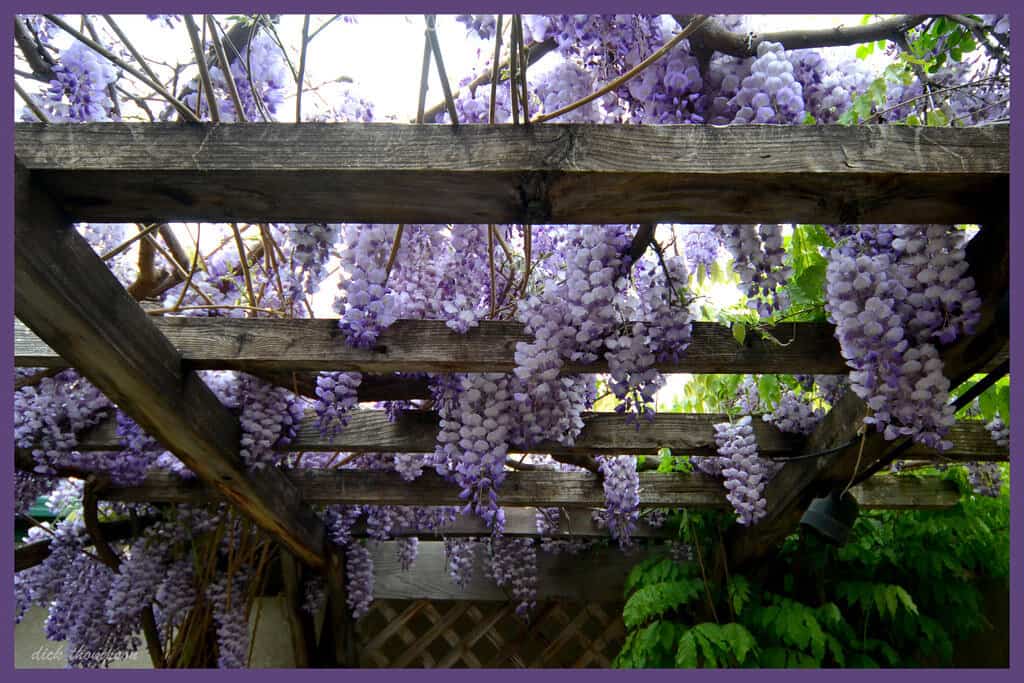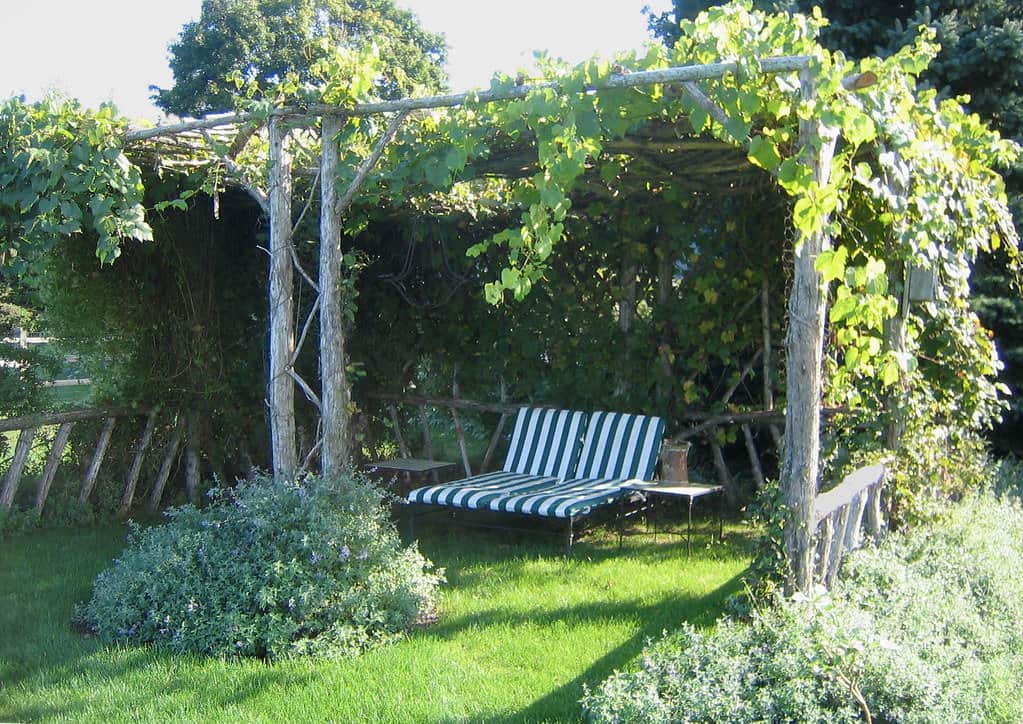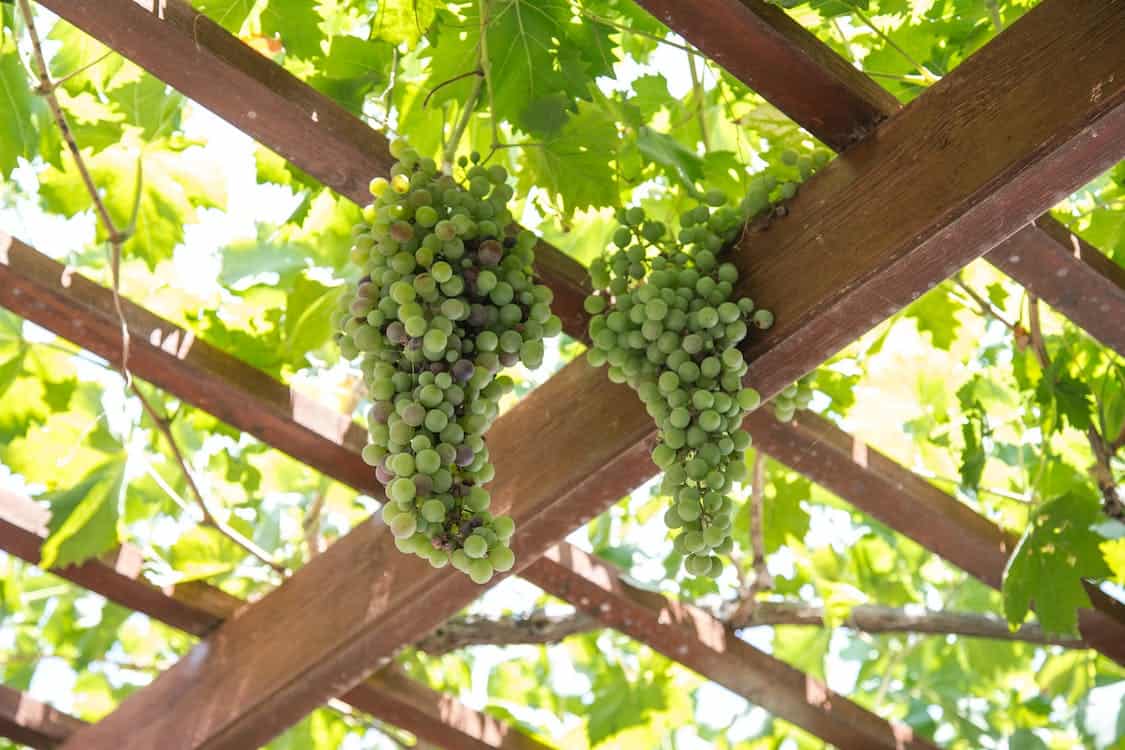Jump to:
Pergolas are outdoor roofs without walls – they’re great for chilling in your garden. Now, picture adding plants and vines to them. This guide will show you how to do just that! We’ll talk about picking the right plants and making your pergola look like a cosy jungle hideaway. If you’re ready to do so, stick around. We’ll keep it simple and fun, promise. Let’s get started!
Steps to Growing Plants and Vines on a Garden Pergola
By following these tips and methods, you’ll set your pergola garden up for success:
1. Choosing the right plants and vines

Pick plants that suit your climate and sunlight levels. Consider factors like temperature, humidity, and sunlight exposure in your area. For instance, if you live in a hot and sunny region, opt for drought-tolerant plants like lavender. Conversely, if your area receives plenty of rainfall, ferns or hostas may thrive.
Go for vines like wisteria or grapevines for pergolas. They add a touch of elegance and charm with their cascading foliage and fragrant blooms. Wisteria, known for its stunning purple flowers, creates a romantic atmosphere. Meanwhile, grapevines offer both beauty and a potential harvest of delicious fruits.
Tip: Look for plants that thrive in containers if your pergola has limited ground space. Opt for compact varieties that can flourish in pots or hanging baskets. Examples include petunias, nasturtiums, or trailing ivy. They can add colour and texture to your pergola without taking up much ground space.
2. Preparing the pergola structure

Ensure the pergola is sturdy and can support the weight of plants. Check the integrity of the structure, including posts, beams, and crossbars. This will ensure they are strong enough to bear the weight of vines, pots, and hanging baskets. Reinforce weak spots if necessary to prevent collapse or damage.
Clean any debris and check for damages that may harm your plants. Remove any fallen leaves, branches, or other debris to maintain a clean environment. Inspect the structure for any signs of damage, such as rot or rust. Repair or replace affected parts to prevent further deterioration.
Install trellises, outdoor arches, or lattice panels along the sides or top of the pergola for vines to climb on if needed. Ensure these structures are securely attached to the pergola framework. That way, they’ll be prevented from sagging or collapsing under the weight of the vines.
3. Planting and training techniques

Plant your chosen greenery in suitable soil and pots if necessary. Ensure the soil is well-draining for healthy root growth. For container planting, choose pots with drainage holes. Plus, use a high-quality potting mix formulated for your plant types. For instance, use a cactus mix for succulents or a moisture-retentive mix for ferns.
Train vines by gently guiding them along the pergola structure. Encourage these greens to climb by loosely wrapping them around support structures. Avoid tightly binding the vines, as this can restrict growth and cause damage. For the wisteria vine, gently guide its tendrils along the pergola beams. This technique will allow them to naturally twine and climb.
Tip: Use ties or clips to secure plants without damaging them; do so loosely. Avoid using materials that may cut into or constrict plant growth, such as wire or plastic ties.
Maintenance tips
- Water plants regularly, especially during dry spells. Monitor soil moisture levels and water plants deeply when the top inch of soil feels dry to the touch. Adjust the watering frequency based on weather conditions and plant needs. This can help ensure consistent moisture levels to support healthy growth.
- Prune vines and plants to control growth and encourage healthy development. Remove dead, damaged, or diseased foliage regularly to promote air circulation. This will also help reduce the risk of pest and disease problems. Prune vines to shape and train them along the pergola structure. Trim back excessive growth as needed to maintain the desired size and appearance.
- Keep an eye out for pests and diseases, and treat them promptly if spotted. Watch out for aphids or scale insects and fungal diseases like powdery mildew or leaf spot. Use environmentally friendly pest control methods such as hand-picking pests. Alternatively, spray with neem oil or introduce beneficial insects like ladybugs.
- Fertilise plants as needed to provide essential nutrients for growth. Supplemental feeding can help replenish nutrients depleted from the soil over time. It helps promote vigorous growth and abundant blooms or fruit production.
Round-up
Adding plants and vines to your pergola makes it look really nice and cosy. Just follow the steps we talked about, like picking the right plants and taking care of them. Whether you go for pretty flowers like wisteria or tasty grapes, it will become a lovely spot in your garden!
Explore Garden Buildings Direct for our wide range of outdoor shade options, with a huge range of gazebos available.
Up next on your reading list: Shade & Shelter – How to Add a Roof to Your Pergola





